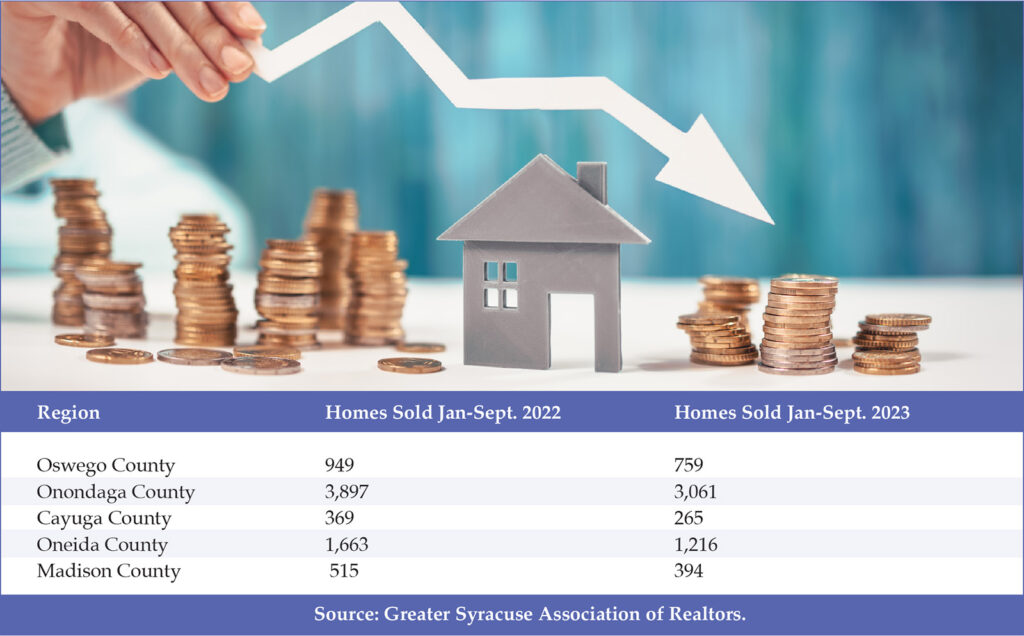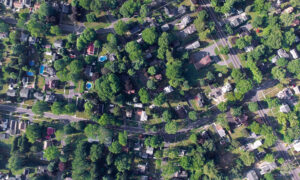Potential changes in the way real estate agents get paid raise concerns from professionals
By Aaron Gifford
In the real estate market, buyer beware was once universal advice.
But in the wake of a federal court case that may change the way how U.S. homes are bought and sold, the disclaimer for Central New Yorkers looking to make a deal could become “buyer, seller and agent beware.”
Earlier this fall, a federal court in Missouri awarded a $1.8 billion verdict after ruling that large real estate brokerage firms and the National Association of Realtors (NAR) conspired to keep home prices artificially high in the interest of paying brokers on both side of the transaction.
The court’s opinion was that the existing commission structure is not in the interest of fair negotiations between the actual customers, according to court documents and published reports. Moreover, the plaintiffs argued that the existing arrangement is outdated considering how technology has increasingly allowed perspective buyers to browse and even tour properties online. NAR argued that the commission structure helps first-time and lower-income buyers who may not have the means to pay commission fees. It plans to appeal the decision.
In a typical home sale, agents representing the buyer and the seller split the commission, typically between 5% and 6%. In the sale of a $200,000 home for example, which is about the median home price in Central New York, the $10,000 commission paid entirely by the person selling the house would be split two ways. In the case of a sale by owner, an agent representing the buyer would still expect to be paid that commission.
A report from real estate industry experts, which was analyzed in the Wall Street Journal, predicted that the lawsuit, if the court decision is not reversed, will take a huge bite out of the estimated $100 billion paid to 1.6 million U.S. real estate agents and may greatly reduce the number of men and women who make a living in the property sale profession.
No new regulations have been handed down to real estate companies yet. But if the court decision is not reversed one possible change could be that agents representing buyers charge an hourly rate in lieu of commissions. Or more homebuyers will simply elect to shop on their own without the help of an agent.
Several realtors throughout the Central New York region were contacted; most indicated they would prefer to withhold comment until a final decision becomes official.

Bill Galloway of Century 21 Galloway Realty said until new regulations are handed down from the court, “it remains business as usual.”
“We don’t know how it’s all going to play out,” he said. “It could take years before it’s settled.”
Galloway could not estimate what percentage of potential homebuyers in the Central New York real estate market hire agents to help them find a house and negotiate with the seller. But he did say it’s reasonable to think that, if and when the large Micron chip plant sets up shop in Clay, buyer’s agents will be in demand to help folks from other states find a place to live.
In the meantime, he encourages agents to disclose all commission structures up front.
“It’s what we’ve always done with customers and I would hope with this lawsuit, all agents are aware of the importance of being up front,” he said. “That’s the nature of the real estate business. It seems like something changes every year.”
If the court decision is upheld, changes to the way buyers’ agents are paid, coupled with high mortgage rates, could come at an already volatile time in the Central New York real estate market. The prices here may be the highest they’ve ever been, but the market is starting to cool off, according to statistics from the Greater Syracuse Association of Realtors (GSAR).
The median sale price in Onondaga, Oswego, Madison, Cayuga and Oneida counties are up more than 7%, from $187,000 to $201,000 through the first nine months of 2023, compared to the same period last year. And the average home price in the region so far this year is even higher, at $242,223. But the number of sales for the same period decreased 22.4%, from 6,987 to 5,429, according to GSAR.
In Oswego County, 759 homes were sold during the first nine months of this year compared to 949 during the same period in 2022, but the average price increased from $169,500 to $180,300.
In Onondaga County, sales decreased from 3,897 to 3,061, but the sale price average went up from $255,800 to $271,600.
In Cayuga County, the number decreased from 369 to 265, with the average price going to from $218,600 to $230,300.
In Oneida County, sales went down from 1,663 homes to 1,216 as average sale price increased only slightly, from $204,200 to $209,600.
Madison County was the only county in the region to report a decrease in average sale price, from $245,600 last year to $244,200, while the number of houses sold also declined, from 515 to 394, according to GSAR.

“Central New Yorkers continue to close on homes that meet their changing life circumstances, but many of those who would typically be looking for a larger home or to downsize have pressed pause due to mortgage rates rising above 7% and strong competition for the reduced number of homes being listed for sale,” Mark Re, president of the Central New York Information Service, said in GSAR’s monthly report. “Today’s mortgage rate and low inventory conditions are keeping much of this important pool of sellers on the sidelines, further reducing potential inventory. Rates reaching a level that will bring them back to the market will have the greatest impact on the housing market going forward.”
The national real estate market, where the number of sales of existing homes recently dropped to a seven-month low, somewhat reflects what’s going on locally, according to the monthly report from NAR.
“With fewer buyers able to afford the costs of homeownership, existing home sales declined 0.7% month-over-month and were down 15.3% year over year,” the report said, also noting that, nationally, the median home price is now up to $407,100.
While Central New York homes appear to be worth less than half of that, the affordability index for buying a house here is still quite favorable compared to other markets. That figure pinpoints what percentage of the median household income is necessary to qualify for financing for a median-priced home under the prevailing interest rates. A higher percentage means greater affordability. For Central New York, that number was 252 in 2021; 172 in 2022; and 145 so far this year, as both market values and interest rates increased. Still, that indicates homes around here are far more affordable than in Denver, which had a rate of 79.9 (last year), El Paso, Texas (109.1) or Pittsfield, Massachusetts (114.7), according to NAR.
Locally, there’s a lot of homes for sale for the time being — 7,389 as of earlier this fall, according GSAR’s most recent report. The Central New York market, despite ups and downs in the past two years, has remained relatively healthy. Whether that remains the case amid federal litigation that threatens to change the way realtors get paid remains to be seen.





